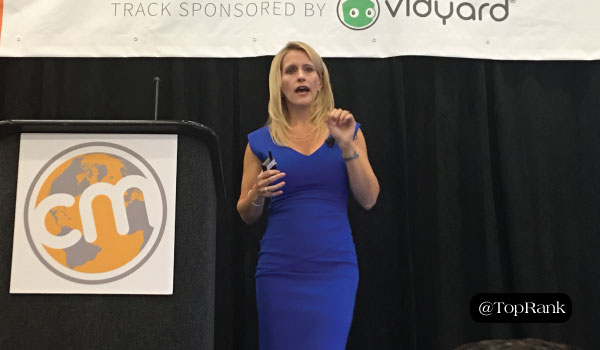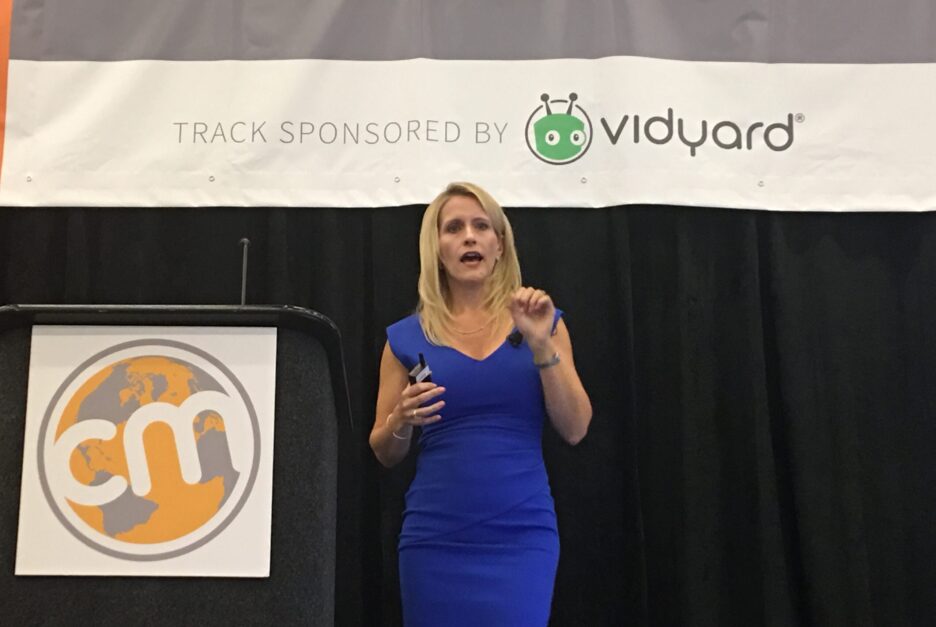
There’s no question that video is an increasingly important digital marketing tactic. Humans are visual creatures by nature and, when done right, video allows brands to tell their story and create meaningful, emotional connections with their audience.
For California-based Jordan Vineyard and Winery, video content has become a central piece of their marketing strategy. Lisa Mattson, Director of Marketing & Communications, shared how they’re winning at video during her Content Marketing World session “How Jordan Winery Crushed Content Marketing With a Video-Centered Strategy.”
For a little background, Jordan Vineyard and Winery has been around since the early 1970s, and until Mattson came on board, they’re marketing strategy hadn’t changed in more than 40 years.
“Even the finest wine has a shelf life,” Mattson said in reference to a brand’s image and personality. “You have to innovate.”
But before you get started with video content, Mattson said you need to answer some critical questions if you want your venture to be successful. Below I outline some of the key questions you need to consider.
#1 – Do you have the upper management support?
This one’s pretty simple. The success of any of your marketing initiatives, especially if you’re looking to add a new tactic like video to the mix, depends on getting buy-in from the top. When the leaders at the top support what you do and are excited about it, that trickles down.
#2 – Are you willing to embed yourself in other departments?
In order to create dynamic video content, you’re going to need to lean on folks in multiple departments. Not only are your colleagues going to be a source of inspiration for the type of content you create, but they may need to actually participate in the filming.
#3 – Are your spokespersons comfortable on camera?
Quite obviously, anyone you put on camera needs to feel comfortable there. If they aren’t, that discomfort will be obvious to your audience and turn them off.
#4 – Are you prepared for resistance from co-workers?
As mentioned above, you’re going to have to work with several people from several departments to create awesome video content. But video is time consuming. And your colleagues are busy and this will add more to their already full plate. As a result, you need to be prepared to be met with some resistance, and have a plan to help you work around it.
#5 – What are the best video stories to tell?
At the end of the day, you’re creating video to help tell your brand’s story. So you need to think critically about what types of stories are a good fit for the medium.
#6 – Can you run lean and mean?
If you’re just starting out with video, you likely don’t have a huge team of resources just yet — and maybe you never will. So, you have to be able to commit to running your video strategy “lean and mean.”
#7 – Do you have IT infrastructure?
Video content can take up a lot of bandwidth, so it’s essential to consider your IT needs from the beginning. Mattson recalled an instance where the retail sales department couldn’t process online customer orders because marketing was using so much juice to upload videos to YouTube. So, it’s absolutely critical to make sure you have the right IT infrastructure.
#8 – How big and thorough is your budget?
While it’s widely known that video costs more to produce, Mattson said you don’t need to have a huge budget. You just need to know what your budget is and make a thorough list of what needs to be included.
“Little things add up,” Mattson said. “You might need a little bit of stock footage, or maybe you need to buy some props, and that all costs money.”
She went on to share some of the specific items you’ll need to budget for upfront, including: lenses, camera body, external drives, iMac, lighting, tripod, audio, editing software, and miscellaneous. She estimated the investment to be about $14,000, which seems high. However, hiring a production company to create just one three-minute video, she said, could cost anywhere from $3,000 to $10,000.
#9 – What are the right skill sets and job responsibilities?
Of course, in order to produce high-quality video content, you need capable people to actually do it. Mattson suggested in embracing multi-talented positions, and hiring candidates with core skills and be willing to cross-train them. In addition, she noted that it’s important to know what skills simply can’t be taught, and that it’s important to set job expectations early and clearly.
#10 – Do you have an editorial plan?
For Mattson, consistency is the key to video success. As a result, you need to have a strategy content plan that helps you keep a cadence that will keep your audience coming back and make an impact.
As an extra tip, she also suggested leaving a little wiggle room in there to take advantage of what’s trending. For example, the song “Despacito” is going gangbusters on the radio, and they created a parody video about bottling their wine. You can watch it below.
#11 – Do you have distribution?
According to Mattson, content might be king, but distribution is queen. Once you create an amazing video, you need to set it free to your audience and go beyond social media.
Some of the distribution considerations mentioned included: where you’re hosting your video content (i.e. YouTube, Vimeo, etc.), paid placement, influencers, and search.
#12 – Do you have an audience?
This is the big one. At the end of the day, if you’re going to do video you have to make sure that you have an audience for it. Depending on your industry, product, service and type of customer, video may not resonate.
One Final Thought
When it comes to creating and executing on a video strategy — or your overall marketing strategy for that matter — there’s one big thing that Mattson said that really resonated with me:
People don’t buy what you do, they buy why you do it. - @lisamattsonwine #video #CMWorld Share on XFor me, this comes down to storytelling. You need a compelling narrative that’s hyperfocused on why your organization does what it does.
Stay tuned for more #CMWorld coverage and insights on the TopRank Marketing Blog. In addition, follow myself and the rest of our on-the-ground team members on Twitter at: @CaitlinMBurgess, @Tiffani_Allen, @leeodden, @knutesands, @NiteWrites, @amywhiggins and @azeckman.



